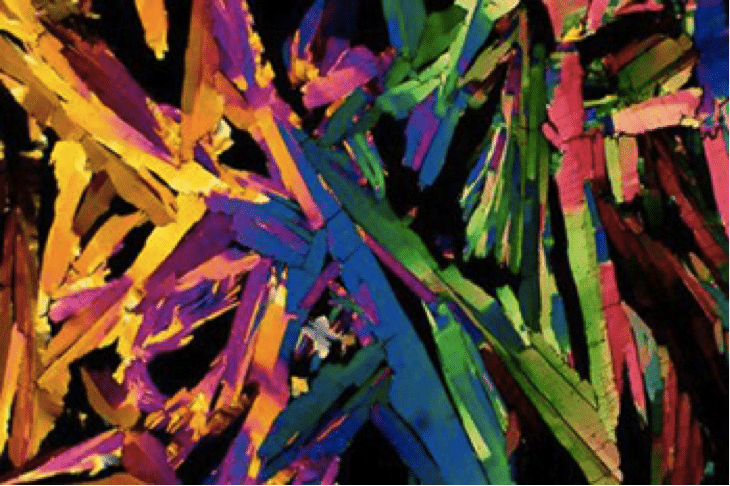One of the miracles of modern microscopes is that they allow us to see things so up close that they look nearly unrecognizable. Take the following image:

What looks like a painting by Kandinsky is actually something quite ordinary: a drop of orange juice, under a powerful microscope lens.
In other words, when you truly look closely at an object, you may see something nearly unrecognizable relative to the original object as seen by the naked eye. The fact of the matter is that when it comes to education reform and research, we are notoriously bad at putting a microscope up to what is actually happening inside real classrooms, between real students and real teachers. This leaves us talking about reform efforts in generalities, aphorisms, and theories.
Next-gen learning has fallen into this trap. Particularly as EdTech penetrates schools nationwide, we often speak to technology’s enormous potential to drive new frontiers in instruction and afford ambitious design choices. But to date, there is little data that captures the intricate, hidden details like the photograph above—data on the actual day-to-day tactics unfolding in blended-learning schools across the country. Even for those of us lucky enough to visit a blended-learning school, those tactics are often difficult, if not impossible, to see with the naked eye—you can’t see students’ pace modulate during a short classroom observation, trace data packets travelling from software programs to students’ and educators’ hands, or read teachers’ minds as they make decisions based on that data.
As a result, what’s working—at the tactical level—inside of blended models tends to remain locked inside of those models and only on occasion communicated by word of mouth among networks of implementers. This, in turn, is holding the field back from homing effective models and then scaling those models to more and more classrooms.
In partnership with the Highlander Institute, the Clayton Christensen Institute is trying to push past the limitations of looking at blended learning with the “naked eye” through our 2016 Blended and Personalized Learning Conference on April 2 in Providence, R.I. The conference will bring together leading implementers from across the country to try to dig deeper—to surface not just their next-gen approaches in broad brushstrokes, but to exchange information, best practices, and challenges at the same grain size which teachers and leaders are actually making day-to-day decisions.
Participants hail from districts and charters, large and small, that are trying to integrate technology into their classrooms and schools, rethink the role of teachers, and unlock data-driven instruction to new heights. Unlike many conferences where thought leaders attempt to synthesize trends and look for commonalities across the space, this conference will deal intently in specificity and unique approaches—throughout the day each of the leading implementers who we’ve recruited will present on what they are doing day-to-day in their systems. Highlander and Christensen will then do our best to report back about those granular details that we learn, through our publications and Blended Learning Universe (BLU) school directory.
As Todd Rose recently highlighted in his book The End of Average, if we want to truly understand what works for individuals—in this case for individual students and local education systems—we must abandon the so-called “averagarianism” impulse to aggregate, then analyze. Instead, Rose posits, we must flip that calculus: analyze individual examples and phenomena and from there aggregate. By surfacing the unique and powerful stories of individual implementers from across the country, we plan to do just that.
If you’d like to join us for the conversation, there’s still time to register here. And stay tuned in the coming weeks for intel gathered at the conference.


